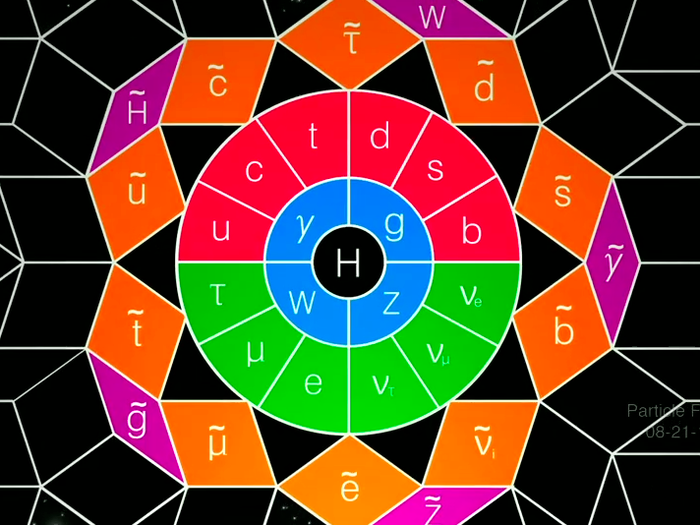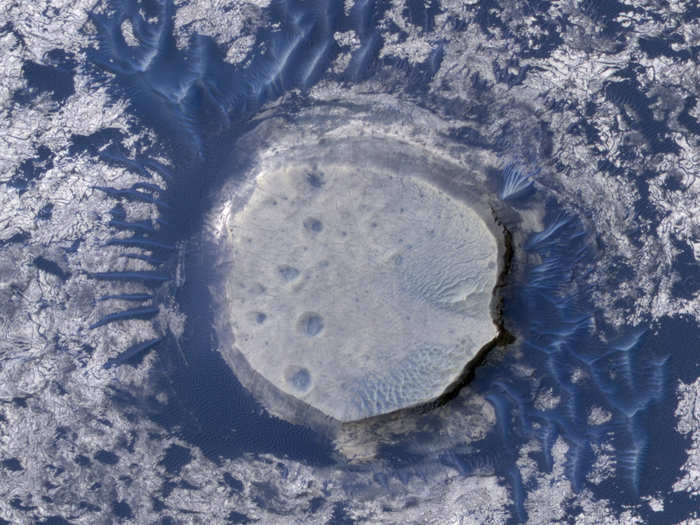Everything you need to know but were too afraid to ask about the biggest machine on Earth - the newly revamped and restarted Large Hadron Collider
Simply put, the LHC is a 17-mile underground ring-shaped tunnel lined with supercooled magnets, accelerator tubes, and huge cameras that snap photos of proton beams crashing into one another at nearly the speed of light. It's so huge you can fit the whole of central London inside its ring.

The LHC is located near Geneva, Switzerland. It was first proposed in the 1980s and the idea was ridiculed by many for being too grandiose. However, the proposal eventually gained traction and the LHC was completed in 2008.
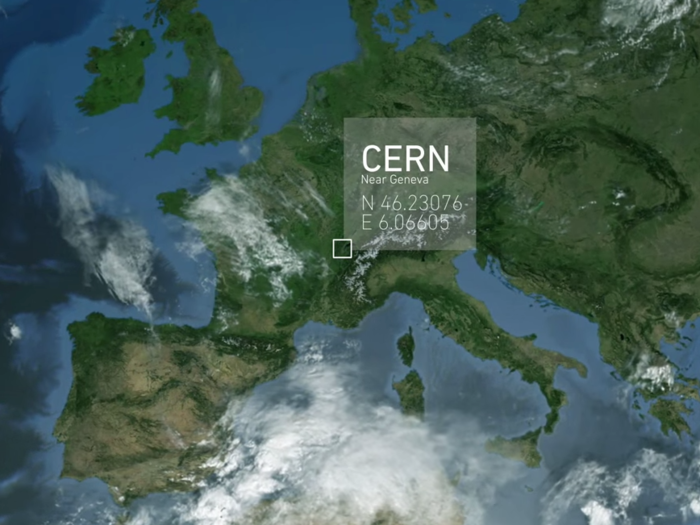
There's no machine on Earth quite like it. “The first time I ever saw it I remember walking in and just being stunned,” Monica Dunford, a physicist who works at the LHC, said in the trailer for the documentary "Particle Fever." “Five stories completely filled with custom-designed, hand-soldered microelectronics.”
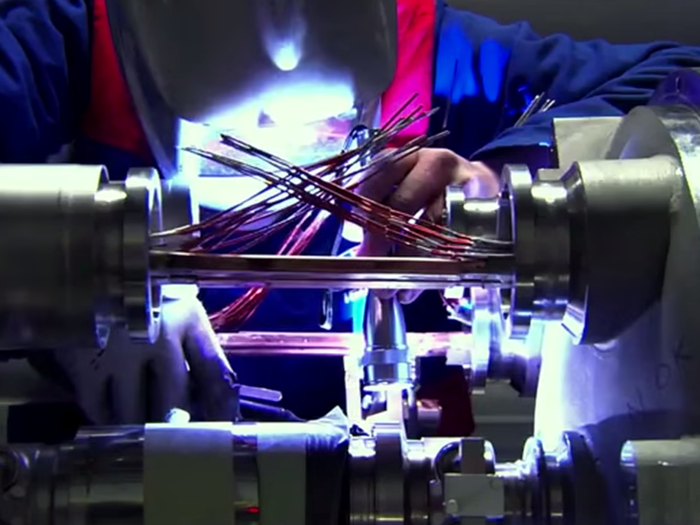
The LHC is a particle accelerator, so it operates by sending beams of protons in opposite directions around its ring. The beams reach near light speed as they race around the LHC and slam into each other, producing tons of tiny cataclysmic head-on collisions. Each collision spits out clouds of subatomic particles that exist for only a fraction of a second and then decay. Physicists study the decay patterns to search for signs of new particles.
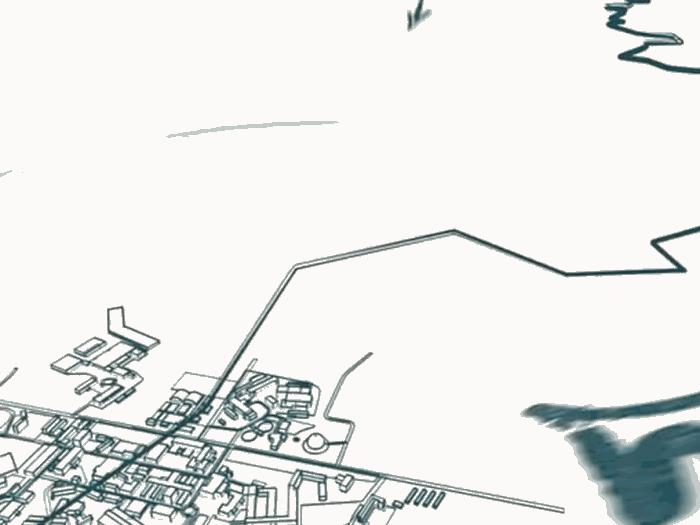
These beams are controlled by the LHC's supercooled magnets. This 3D cut out shows these magnets in cross section. They operate just a few degrees above absolute zero. Two proton beams traveling in opposite directions are shown in red and blue.
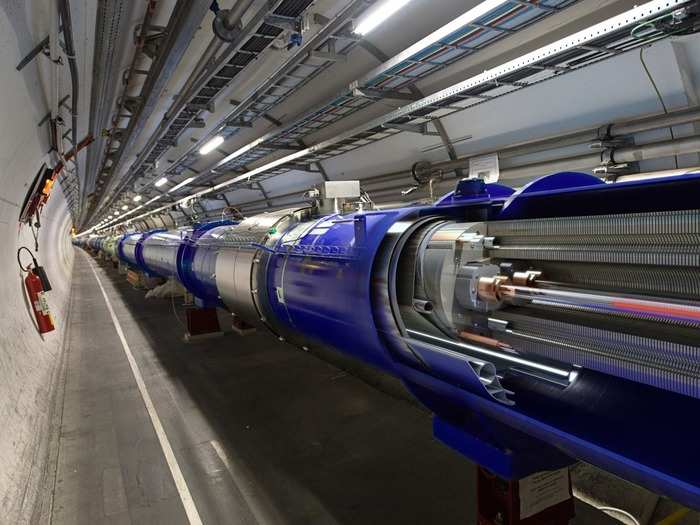
As these beams of protons crash into each other, they produce hot clouds of tiny particles. Physicists can't measure the actual particles directly. Instead, the readings from the detector of the particles' paths are used to create a reconstructed picture of the collision, similar to the image below. From this data, physicists can figure out a particle's position, speed, charge, mass, and energy.
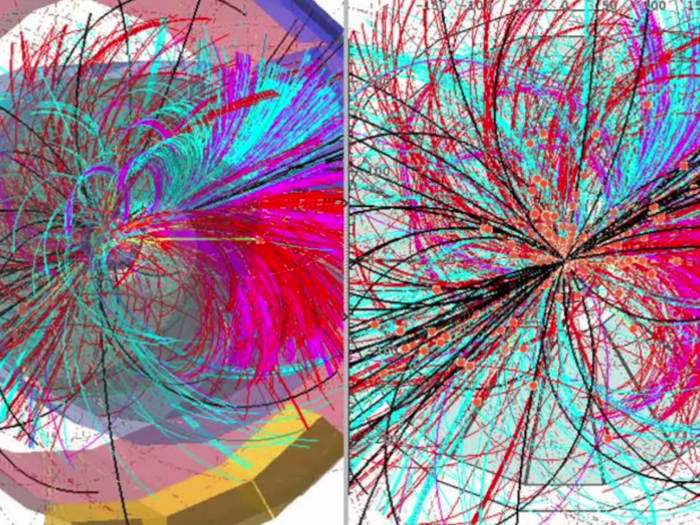
The LHC is so large because that's the only way to get the protons traveling fast enough to create clouds of particles when they collide. Think about driving a car: you have to slow way down to turn a corner. Physicists want the particles to travel in as close to a straight line as possible so they won't have to slow down. A giant ring creates a more gradual the curve so the particles don't have to slow down too much.
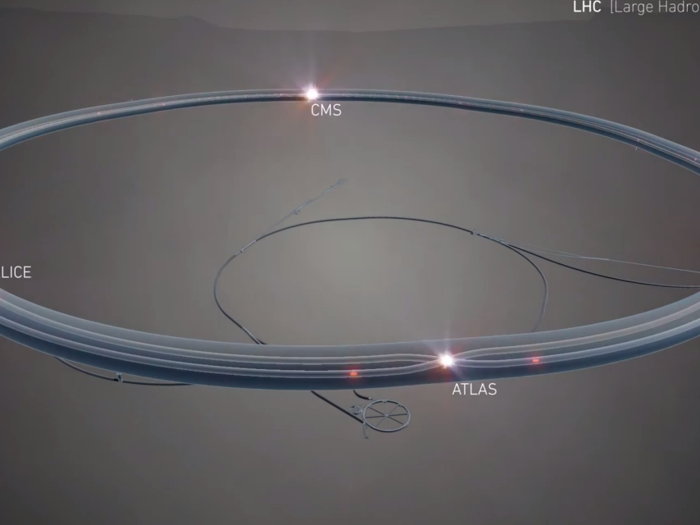
The breakneck speed of the beams means that protons can complete over 11,000 laps of the LHC every second.
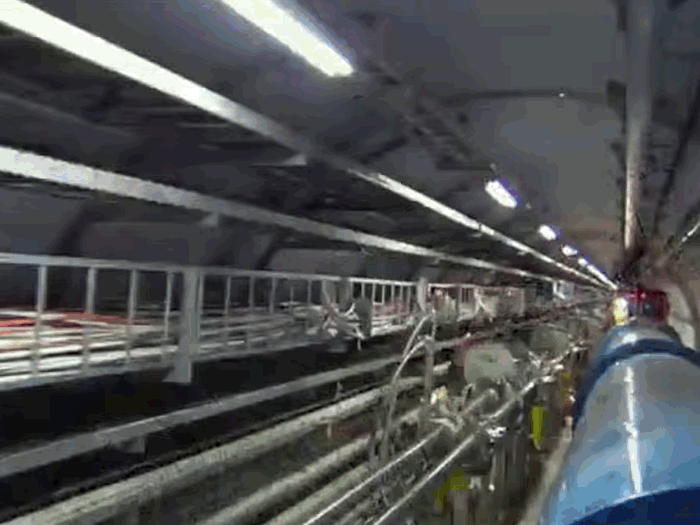
So when the LHC operates at full power, it will generate about 100 collisions per second of valuable data. That means every year the LHC will produce data that's equivalent to a stack of CDs almost 12.5 miles high.
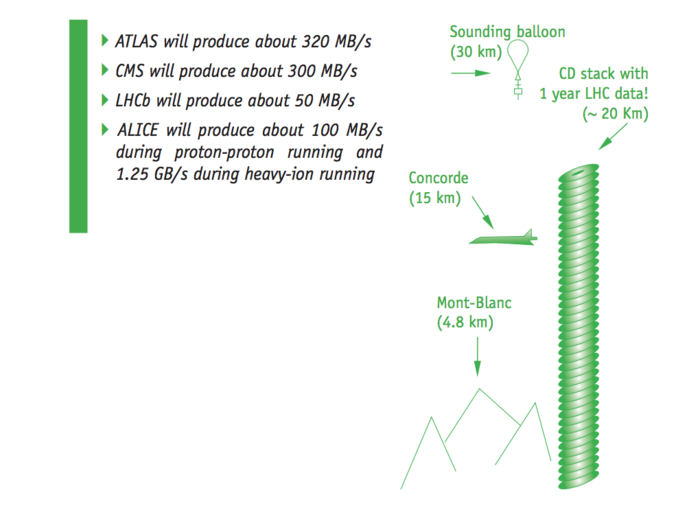
Over 100,000 computers try to make sense of all this data, and thousands of scientists around the globe work on data from the giant machine. The World Wide Web was actually invented at CERN in the early 90s so that physicists could share data from CERN's other particle accelerators.
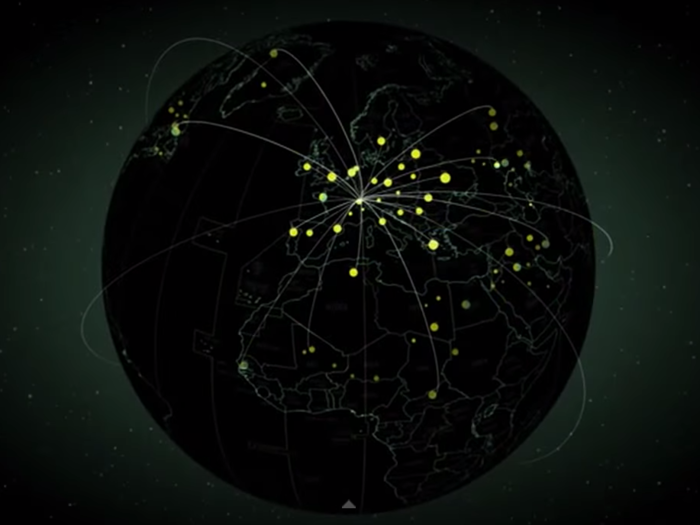
In 2012, the LHC rocked the world when physicists announced they had discovered the Higgs boson. This iconic image of the particle is only a reconstructed collision pattern and particle decay path.
Now the LHC is fitted with upgrades and in a few months it will start churning out data again. This is one of the access points along the LHC's huge underground tunnel. The next closest one is two miles away.
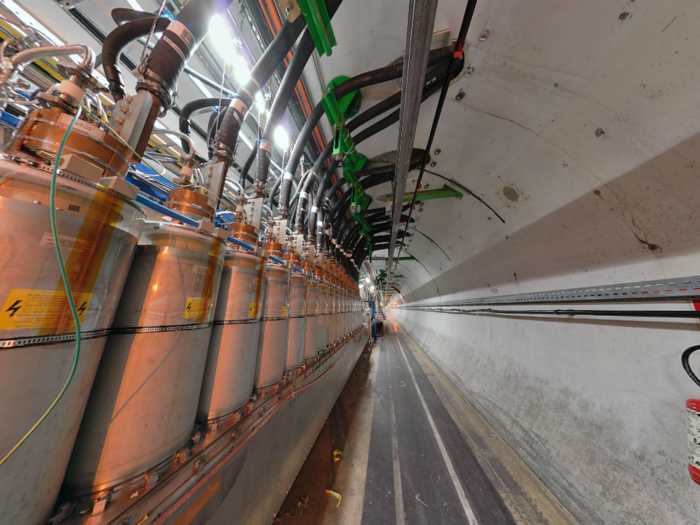
LHC technicians get around the huge machine via bicycle.
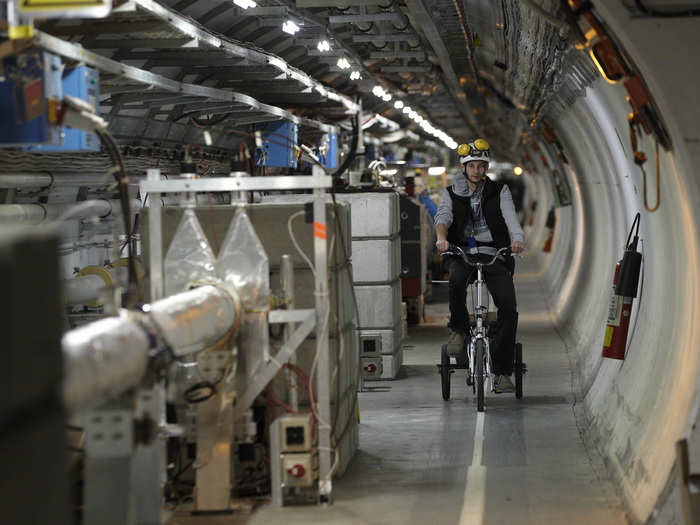
The LHC has four points around its ring where protons collide. Four giant particle detectors, one at each collision point, are each sorting through mountains of particle collision data. The four detectors are called ALICE, ATLAS, CMS, and LHCb.
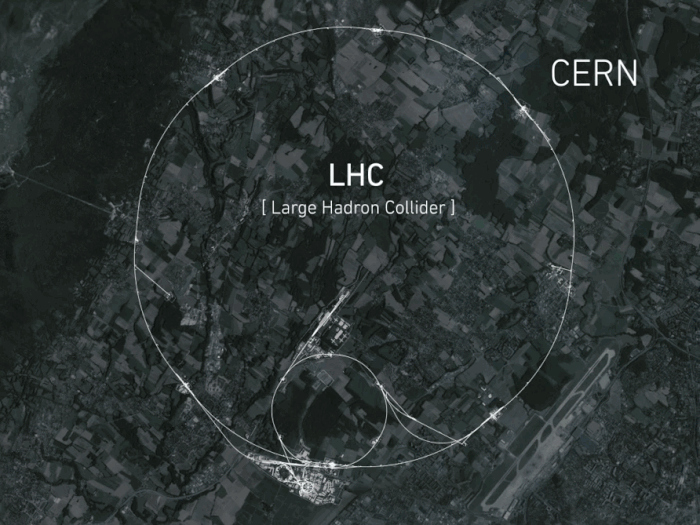
The first LHC detector is called ALICE and it stands over 50 feet tall and weighs more than the Eiffel Tower.

ALICE uses the world's largest warm magnet. It operates with a 30,000 ampere electric current — about the equivalent of an average lightning bolt.
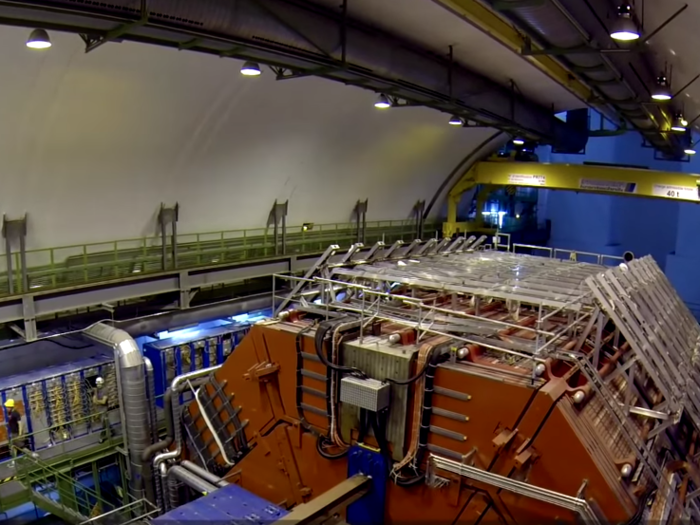
The control room of ALICE involves 1500 scientists and technicians that wade through all the data.
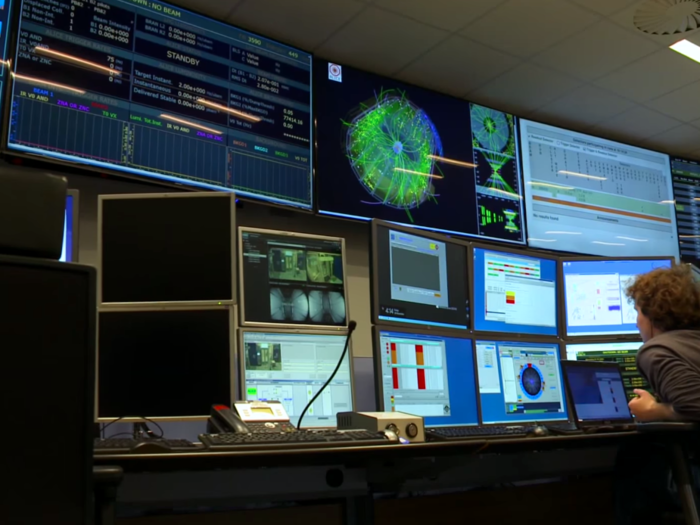
ALICE specializes in detecting a type of plasma created from proton-proton collisions that physicists suspect is similar to what existed just as the Big Bang was happening. Physicists think ALICE could reveal insights into how matter is composed and what holds atoms together.
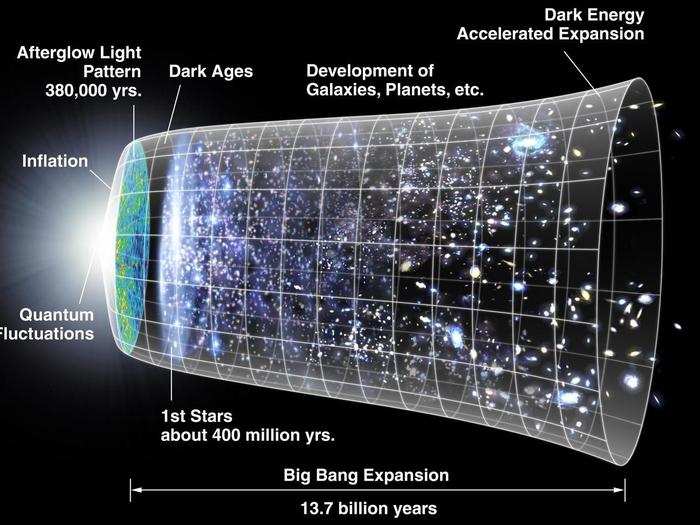
LHC's second particle detector is called ATLAS. The man standing in the foreground gives you an idea of how large this detector is.
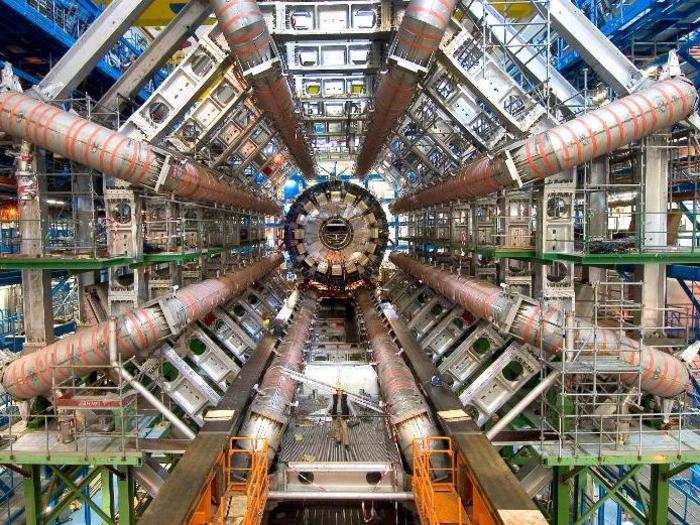
ATLAS is a general-purpose detector designed to search for signs of everything from extra dimensions to dark matter particles.
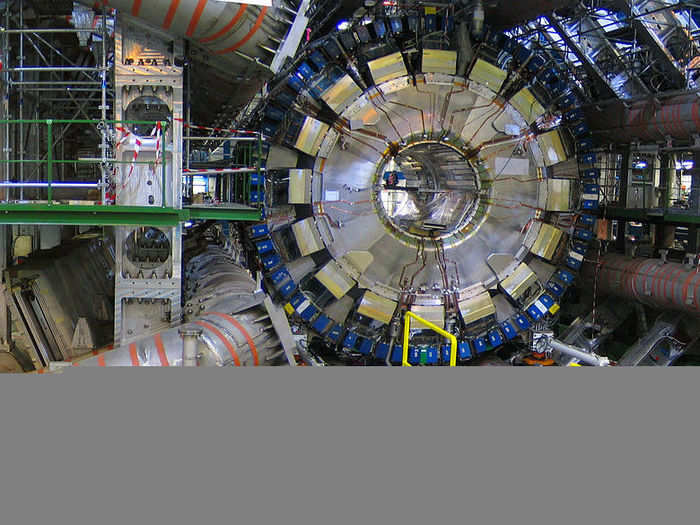
The third particle detector is called CMS. Like ATLAS, it is also a general-purpose detector. This detector contains a coil of superconducting cable that generates a magnetic field 100,000 times the magnitude of Earth's magnetic field.
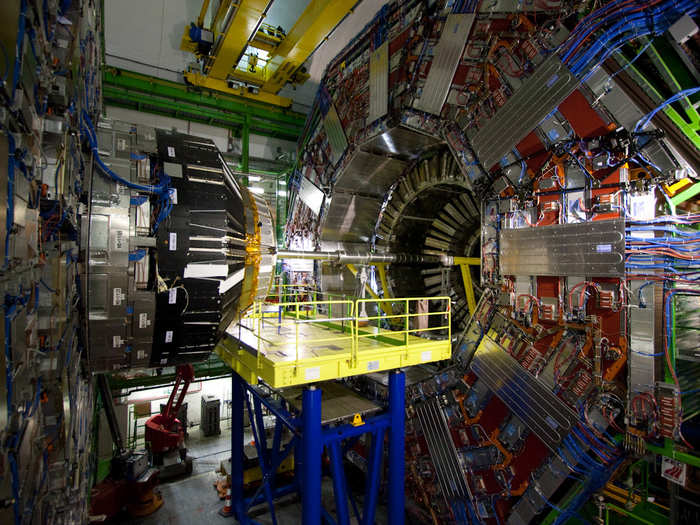
CMS is 50 feet tall and weighs over 12,000 tonnes. Physicists are using it to search for things like supersymmetric particles and dark matter particles.
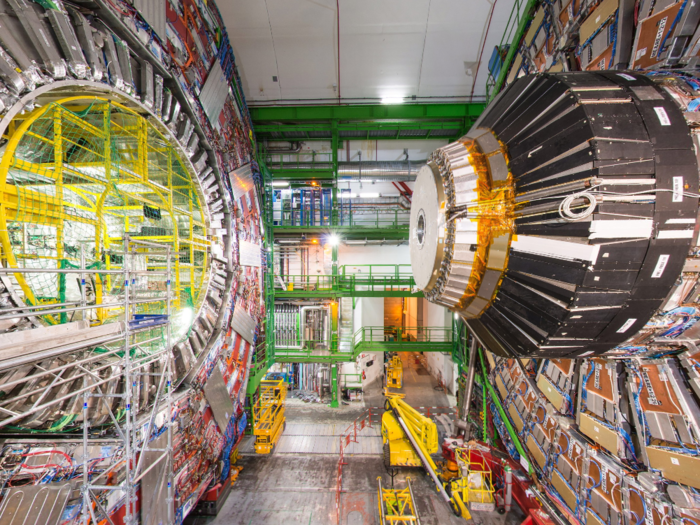
The fourth detector is called LHCb and it weighs 4,500 tonnes.
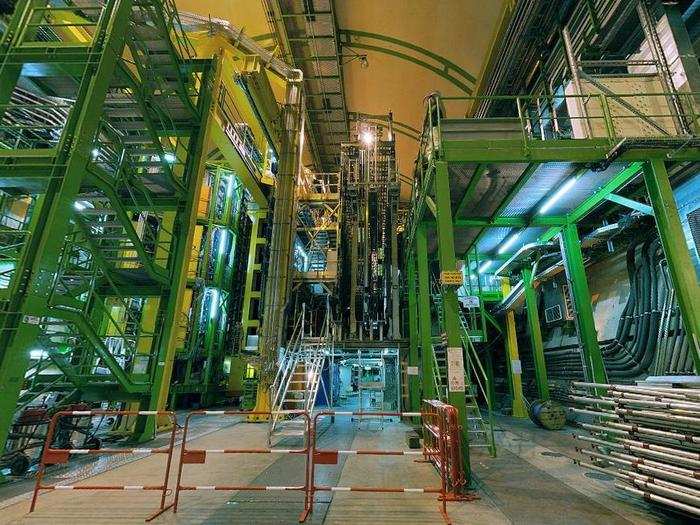
The LHCb is designed to solve the mystery of why there's so much more matter than antimatter in the universe.
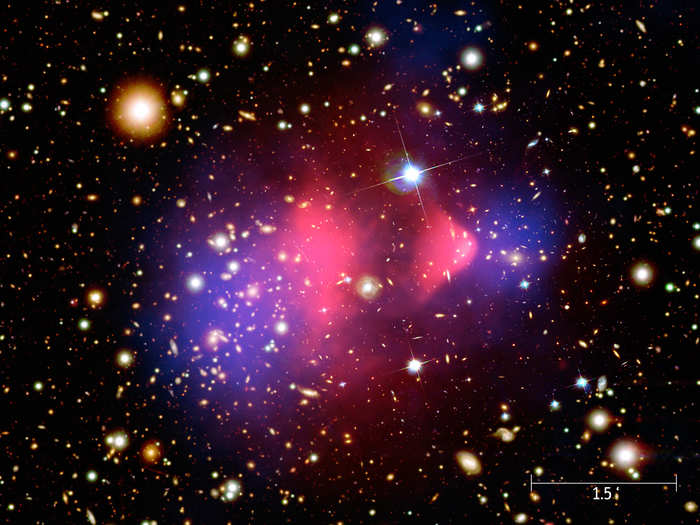
The LHC restarted on April 5 after a two-year break. It'll take a few months to get warmed up, but eventually the machine will be hurling proton beams at 60% more power than its first run. Physicists think the new and improved LHC could solve several mysteries within in the field.
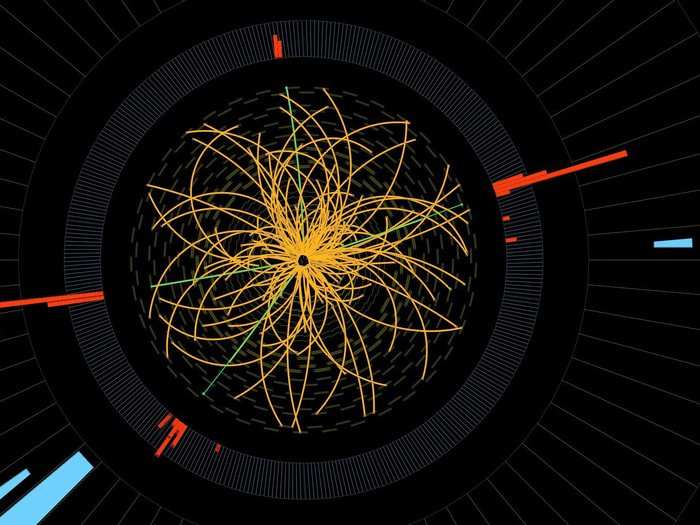
The second run could finally reveal what dark matter is made of.
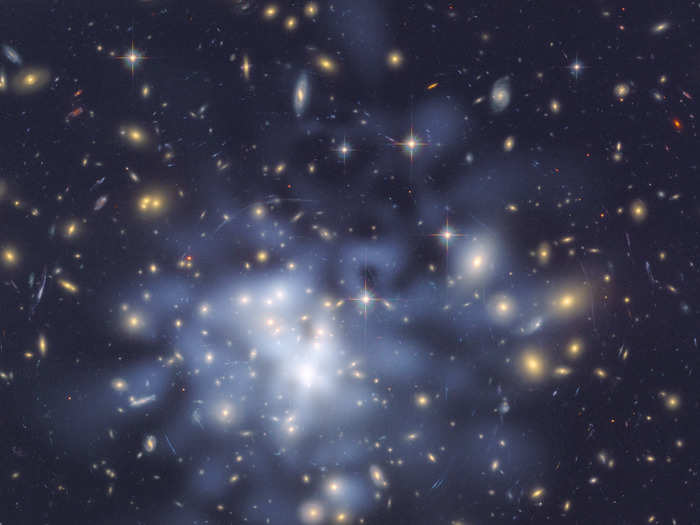
It could even lend support to the wacky idea of parallel universes.
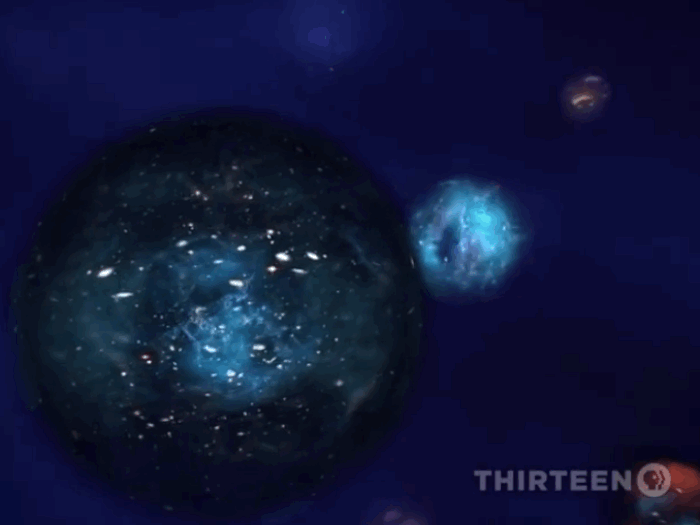
Popular Right Now
Popular Keywords
- India’s wearables market decline
- Vivo V40 Pro vs OnePlus 12R
- Nothing Phone (2a) Plus vs OnePlus Nord 4
- Upcoming smartphones launching in August
- Nothing Phone (2a) review
- Current Location in Google
- Hide Whatsapp Messages
- Phone is hacked or not
- Whatsapp Deleted Messages
- Download photos from Whatsapp
- Instagram Messages
- How to lock facebook profile
- Android 14
- Unfollowed on Instagram
Advertisement
